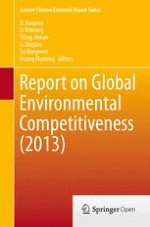This book explores the environmental competitiveness of 133 countries around the world, presenting an index evaluation system to facilitate a comparative analysis of environmental competitiveness on a global scale. This is a new way to measure competitiveness in the light of the contradiction between world economic development and environmental protection. Global environmental competitiveness covers five aspects: the ecological environment, resources environment, environmental management, environmental impacts and environmental coordination. The authors use longitudinal study and horizontal analysis, combining qualitative and quantitative analysis methods so as to conduct an in-depth study of theoretical, empirical and methodological issues of global environmental competitiveness.
The work is presented here in three main parts beginning with the theory, technical road-map and analytical approach used. The second part reports on the countries as evaluation objects, analyzing the development status of global environmental competitiveness as a whole and revealing the strengths and weaknesses of each country’s environmental competitiveness. Basic paths and strategies to enhance the competitiveness level are presented. In the third part the reader will discover a sub-report and evaluation of the environmental competitiveness for 133 countries around the world, revealing the characteristics and relative differences of countries representing different levels of development, in order to provide an important decision-making reference to those considering environmental economic policies, especially those considering accelerating a green economic transformation and enhancing environmental competitiveness.
This book will appeal to scholars and professionals with an interest in environmental issues and environmental competitiveness at a global level, as well as those with an interest in each of the 133 countries analyzed in this text, including environmental policy makers in those countries.
